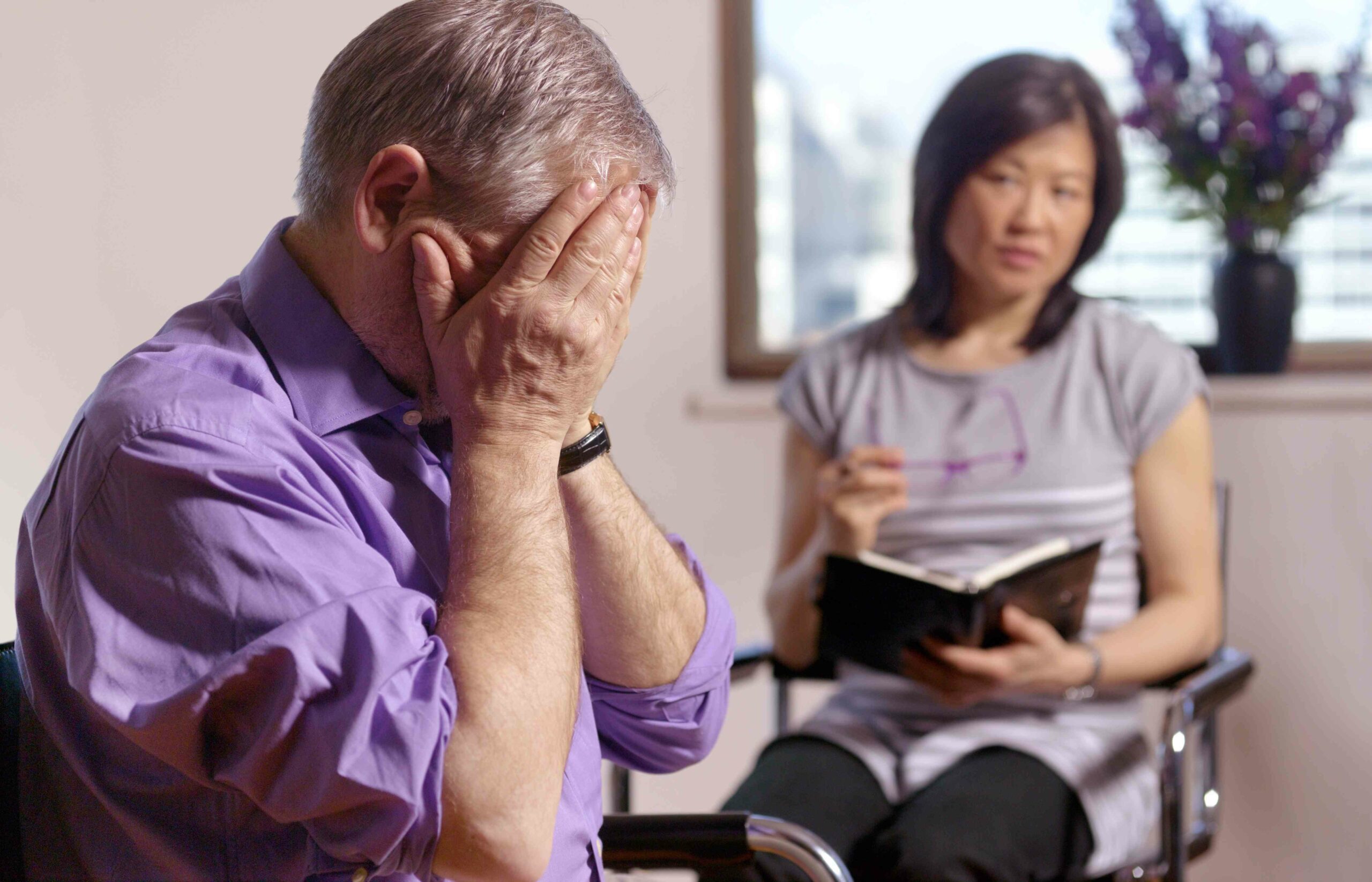Exposure therapy has been found to effectively address the symptoms of post-traumatic stress disorder (PTSD), as well as symptoms of other anxiety disorders. With this roundup of different forms of exposure therapy, find out which treatment is right for you.
Overview of Exposure Therapy for PTSD
Exposure therapy is considered a behavioral treatment for PTSD. This is because exposure therapy targets learned behaviors that people engage in (most often the avoidance) in response to situations or thoughts and memories that are viewed as frightening or anxiety-provoking. For example, a rape survivor may begin to avoid relationships or going out on dates for fear that she will be attacked again.
It is important to recognize that this learned avoidance serves a purpose. When a person experiences a traumatic event, he may begin to act in ways to avoid threatening situations with the goal of trying to prevent that traumatic experience from happening again.
Avoidance is a safety-seeking or protective response. However, as this avoidance behavior becomes more extreme, a person’s quality of life may lessen.
He may lose touch with family or experience difficulties at work or in relationships.
In addition, avoidance can make PTSD symptoms stick around longer or even intensify. That is because a person is avoiding certain situations, thoughts, or emotions, he doesn’t have the opportunity to learn that these situations may not be quite as threatening as they seem. In addition, by avoiding thoughts, memories, and emotions, a person doesn’t let himself fully process those experiences.
The goal of exposure therapy then is to help reduce a person’s fear and anxiety, with the ultimate goal of eliminating avoidance behavior and increasing quality of life. This is done by actively confronting the things that a person fears. By confronting feared situations, thoughts, and emotions, a person can learn that anxiety and fear will lessen on its own.
So, how does a person actively confront feared situations, thoughts, and emotions during exposure therapy? A number of methods may be used by a therapist. These are described below.
Get Advice From The Verywell Mind Podcast
Hosted by Editor-in-Chief and therapist Amy Morin, LCSW, this episode of The Verywell Mind Podcast shares how to face your fears in a healthy way.

Follow Now: Apple Podcasts / Spotify / Google Podcasts
Methods of Exposure Therapy
In Vivo Exposure
In vivo exposure refers to the direct confrontation of feared objects, activities or situations by a person under the guidance of a therapist. For example, a woman with PTSD who fears the location where she was assaulted may be assisted by her therapist in going to that location and directly confronting those fears (as long as it is safe to do so).
Likewise, a person with social anxiety disorder who fears public speaking may be instructed to directly confront those fears by giving a speech.
Imaginal Exposure
In imaginal exposure, a client is asked to imagine feared images or situations. Imaginal exposure can help a person directly confront feared thoughts and memories.
Imaginal exposure also may be used when it is not possible or safe for a person to directly confront a feared situation.
For example, it would not be safe to have a combat veteran with PTSD to directly confront a combat situation again. Therefore, he may be asked to imagine a feared combat situation that he experienced.
Interoceptive Exposure
Interoceptive exposure was originally designed to treat panic disorder. However, there is evidence that interoceptive exposure may be successful in the treatment of PTSD as well. It is designed to help people directly confront feared bodily symptoms often associated with anxiety, such as an increased heart rate and shortness of breath. The therapist may assist this by having a person (in a controlled and safe manner) hyperventilate for a brief period of time, exercise, breathe through a straw or hold his breath.
Prolonged Exposure
Prolonged exposure therapy is a combination of the above three methods. Prolonged exposure has been found to be very effective for PTSD sufferers. It involves an average of 8 to 15 sessions for about 90 minutes per session.
Prolonged exposure therapy consists of education about trauma and what you will be doing, learning how to control your breathing (interoceptive exposure), practicing in the real world (in vivo exposure), and talking about your trauma (imaginal exposure).
Finding a Therapist for PTSD
Exposure therapy has been found to be a very effective treatment for PTSD. In addition, methods for delivering exposure therapy to people is continuing to advance. In particular, some therapists are beginning to use virtual reality technology to help people confront the things they fear most.
Yet, it is important to recognize that some people are hesitant to go through exposure therapy because it might sound scary to confront fears. Exposure therapy is like any other treatment for PTSD. It requires a tremendous commitment and can be difficult at times. A major part of most treatments for PTSD is confronting and connecting with feared situations, thoughts, and feelings. The way in which this is done in each treatment simply differ.
Therefore, it is very important to find the right therapist and treatment for you. You can find out more information about treatment providers in your area who might offer exposure therapy through the Anxiety Disorder Association of America.
Prolonged Exposure (PE) for PTSD
Available en Español | Ver todos
The best treatments for PTSD are trauma-focused talk therapies. These treatments help you process—or work through—your traumatic experience. Learn about Prolonged Exposure (PE), which teaches you not to be afraid of the memory of your trauma or other trauma reminders.
Reading time: minutes
What Type of Treatment Is This?
Prolonged Exposure (PE) is a psychotherapy—or talk therapy— for PTSD. It is one specific type of Cognitive Behavioral Therapy. PE teaches you to gradually approach trauma-related memories, feelings, and situations that you have been avoiding since your trauma. By confronting these challenges, you can actually decrease your PTSD symptoms.
Video
What is Prolonged Exposure (PE)?
Providers describe PE in this 1 minute video.

What Is Prolonged Exposure (PE)?
How Does It Work?
People with PTSD often try to avoid anything that reminds them of the trauma. This can help you feel better in the moment, but not in the long term. Avoiding these feelings and situations actually keeps you from recovering from PTSD. PE works by helping you face your fears. By talking about the details of the trauma and by confronting safe situations that you have been avoiding, you can decrease your PTSD symptoms and regain more control of your life.
Video
How PE works.
Three providers discuss the benefits of Prolonged Exposure.

Hear from Providers about How PE Works.
What Can I Expect?
Your provider will start by giving you an overview of treatment and getting to know more about your past experiences. You will also learn a breathing technique to help you manage anxiety. Around your second session, you will work with your provider to make a list of people, places, or activities that you have stayed away from since your trauma. Over the course of therapy, you will work through your list step-by-step, practicing in vivo exposure. This means that you will gradually confront these situations. With time, you will find that you can feel comfortable in these situations–and you will not need to avoid them anymore. After a few sessions, you will begin to talk through the details of your trauma with your provider. This is called imaginal exposure. Talking about the trauma can help with emotions like fear, anger, and sadness. You will listen to recordings of your imaginal exposure between sessions. By confronting the details of the trauma in therapy, you will find that you have fewer unwanted memories at other times.
Video
What to Expect
A provider discusses what commonly occurs during prolonged exposure treatment.

What to Expect
Is It Effective?
Yes, trauma-focused psychotherapy (including Prolonged Exposure) is one of the most effective types of treatment for PTSD.
Video
Prolonged Exposure: Is it effective?
Providers share what other patients have been able to do after treatment.

Prolonged Exposure: Is It Effective?
How Long Does Treatment Last?
PE usually takes 8-15 weekly sessions, so treatment lasts about 3 months. Sessions are 1.5 hours each. You may start to feel better after a few sessions. And the benefits of PE often last long after your final session with your provider.
What Are the Risks?
The risks of doing PE are mild to moderate discomfort when engaging in new activities and when talking about trauma related memories. These feelings are usually brief and people tend to feel better as they keep doing PE. There is also a slight risk that someone could listen to a therapy session without your permission if the recording was not secure. You and your provider can discuss ways to secure your personal information related to this program. Most people who complete PE find that the benefits outweigh any initial discomfort.
Group or Individual?
PE is an individual therapy. You will meet one-to-one with your provider for each session.
Will I Talk in Detail about My Trauma?
Yes, around your 3rd session, you will start talking in detail about your trauma. Your provider will guide you through it, keep track of your anxiety level as you talk, and make sure you take things at your own pace. You will listen to a recording of this part of your session at home between sessions.
Will I Have Homework?
Yes, you will practice doing some of the things you have avoided since your trauma. You will start with activities that are manageable for you, and you will work up to activities that are more challenging. You will also listen to a recording of your therapy sessions, including your imaginal exposure recording. Practicing these skills between sessions helps you get the most out of PE.
How Available Is This in VA?
Moderate. Almost all VA Medical Centers offer PE in their specialized PTSD programs and more than 2,000 VA providers are trained in PE. Smaller VA facilities that do not offer PE may be able to use video-conferencing to have you receive PE from a provider at another location.
Does VA Have an App for That?
Yes, PE Coach Coach is a mobile app that you can use while you are doing PE with a provider. PE Coach can help you to learn more about PE and PTSD symptoms and helps you stay organized as you complete PE. It a free download on most mobile devices. After your initial download, you will not be required to use your personal minutes or data. This app does not share any information with the VA, so it is up to you if you want to show your provider your information.
Choosing the Best Treatment for You
Trying to figure out which PTSD treatment is best for you? For more videos about Prolonged Exposure and other treatments that work, get started with the PTSD Treatment Decision Aid




